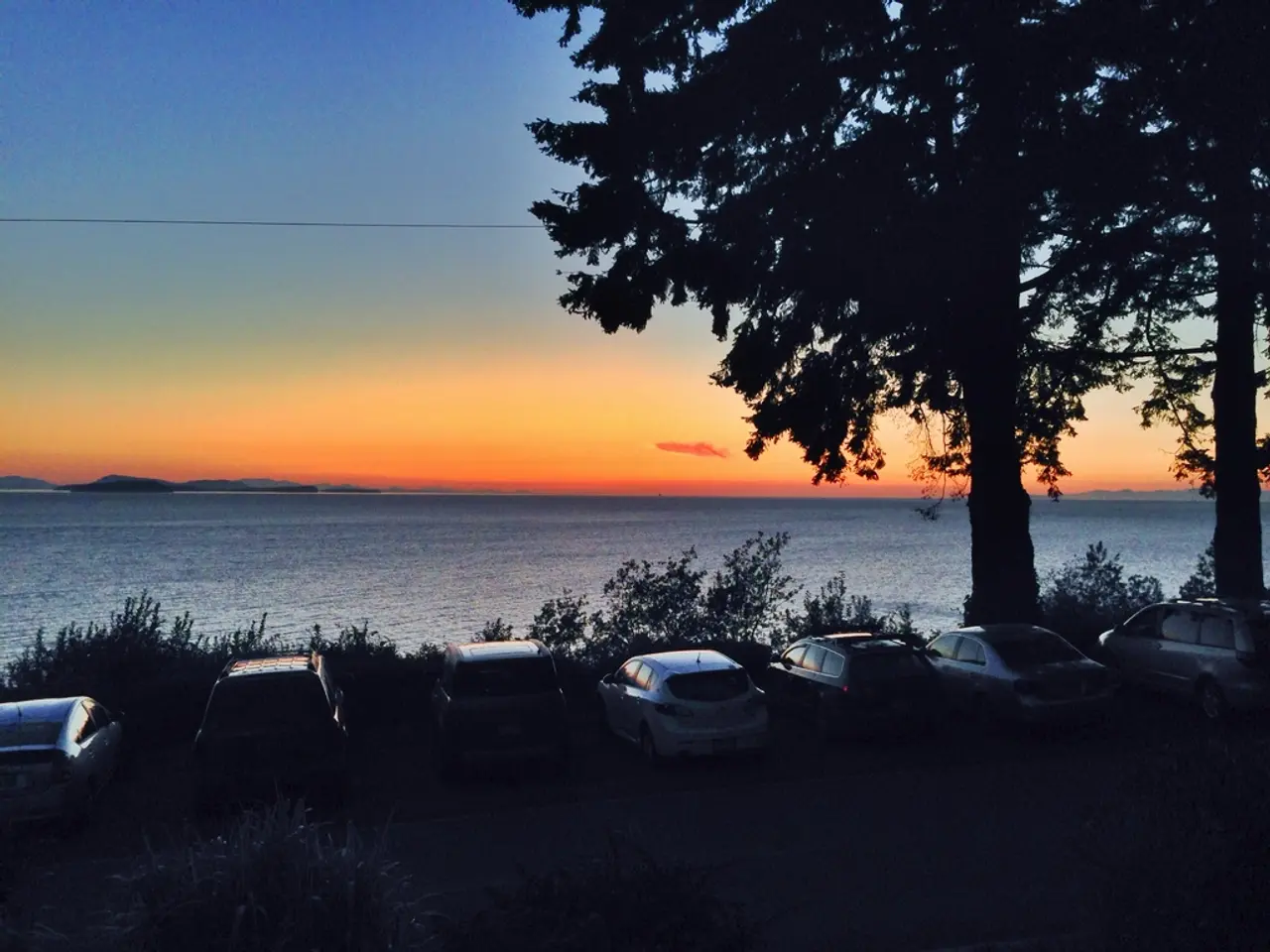Anterolisthesis: Characteristics, causes, and remedies
Retrolisthesis and anterolisthesis are spinal conditions that cause a vertebra to slip out of its normal position, potentially leading to discomfort and various symptoms. This article explores the causes, symptoms, and treatments for these conditions.
Retrolisthesis, a condition where one vertebra slips backward relative to the adjacent vertebra, is primarily caused by degenerative spinal changes or trauma. Other factors such as spinal conditions, posture, repetitive stress, and underlying medical disorders can also contribute to its development [1]. Anterolisthesis, specifically referring to anterior (forward) slippage of the vertebra, can result from trauma, strenuous physical exercise, a bone abnormality at birth, underlying conditions such as weak bones, arthritis, or tumors, or spondylosis of the upper (cervical) vertebrae [4].
Symptoms of both conditions vary depending on severity but may include back pain and discomfort, neck and shoulder pain, nerve compression symptoms such as tingling, numbness, burning pain, or weakness in limbs, stiffness and reduced range of motion, and in some cases, a noticeable bulge or deformity in the spine [1].
The first-line approach for managing retrolisthesis and anterolisthesis is conservative care. This typically includes physical therapy, chiropractic adjustments, and exercises targeted at improving spinal alignment, strengthening core muscles, and enhancing disc health [1]. Pain management may involve medications or other modalities to reduce inflammation and discomfort. Customized exercise programs specific to the patient's condition are also essential to support spinal stability without causing further slippage [1][3].
For most people with low-grade anterolisthesis, back pain and other symptoms may improve with nonsurgical treatment, but there is insufficient evidence that surgical approaches are suitable for all people [2]. Rehabilitation for lumbar spondylolisthesis, which includes anterolisthesis, focuses on the muscles surrounding the lumbar spine [3].
Doctors may diagnose anterolisthesis using a physical examination, reflex check, and imaging techniques such as X-rays, CT scans, and MRI scans [1]. Treatment depends on the grade of slippage, with individuals with grade I or 2 slips usually treated with medication, bed rest, and strengthening and exercise programs, while individuals with higher grades may be considered candidates for surgery [3].
In severe or unresponsive cases, surgery may be considered a last resort for progressive slippage or persistent pain. Surgery for anterolisthesis may involve adjusting the vertebrae with plates, wires, rods, or screws, decompression, or spinal fusion [1].
In conclusion, early diagnosis and a combination of physical therapy, chiropractic care, and tailored exercises form the cornerstone of effective management aimed at preventing progression and improving quality of life [1][3]. For most cases, conservative care yields the best outcomes without the need for invasive surgery. However, it is crucial to consult a doctor or physical therapist for personalised advice and treatment plans.
- Predictive analysis in the field of health and wellness could be valuable in identifying individuals at risk of developing spinal conditions like retrolisthesis and anterolisthesis.
- Science has shown that managing diabetes, asthma, obesity, and other chronic diseases can aid in the prevention and treatment of various spinal conditions, such as retrolisthesis and anterolisthesis.
- Workplace-wellness programs should include education about spinal health, as conditions like retrolisthesis and anterolisthesis can be exacerbated by poor posture and prolonged sedentary work.
- In addition to physical therapy, therapies and treatments for retrolisthesis and anterolisthesis may also involve nutrition counseling for weight management and cardiovascular health.
- As part of a comprehensive approach to managing chronic conditions like retrolisthesis and anterolisthesis, mental health care and counseling can help patients cope with pain and stress related to these conditions.
- Proper skin-care routines can prevent skin conditions that may occur from prolonged bed rest or as a result of certain medications used to treat retrolisthesis and anterolisthesis.
- Eye-healthcare is crucial for monitoring complications from any invasive procedures or long-term medications used in the treatment of retrolisthesis and anterolisthesis.
- Fitness-and-exercise regimens, effective weight-management strategies, and a healthy diet can help manage obesity, a risk factor for retrolisthesis and anterolisthesis.
- The incidence of retrolisthesis and anterolisthesis may be higher among individuals with chronic medical conditions, such as HIV, chronic kidney disease, or cancer, due to weakened immune systems and bone health.
- Respiratory conditions like asthma can compromise the body’s ability to recover from surgeries or other medical treatments for retrolisthesis and anterolisthesis.
- Encouraging regular eye exams and screening for common skin conditions can aid in the early detection of diseases like diabetes and HIV, which may be associated with retrolisthesis and anterolisthesis.
- AQ, a predictive proprietary tool used in healthcare and wellness, can help identify risk factors related to retrolisthesis and anterolisthesis and recommend interventions such as physical therapy or medication management.
- Preparing for a physical therapy session requires obtaining necessary medical clearance and inquiring about pre- and post-therapy measures to ensure optimal results and avoid exacerbating underlying medical conditions like diabetes, asthma, and chronic kidney disease.




